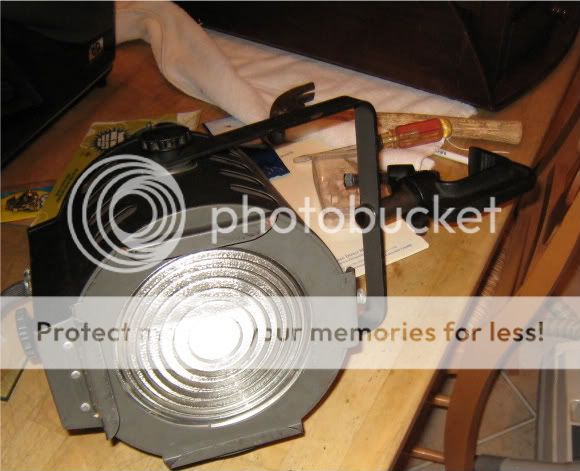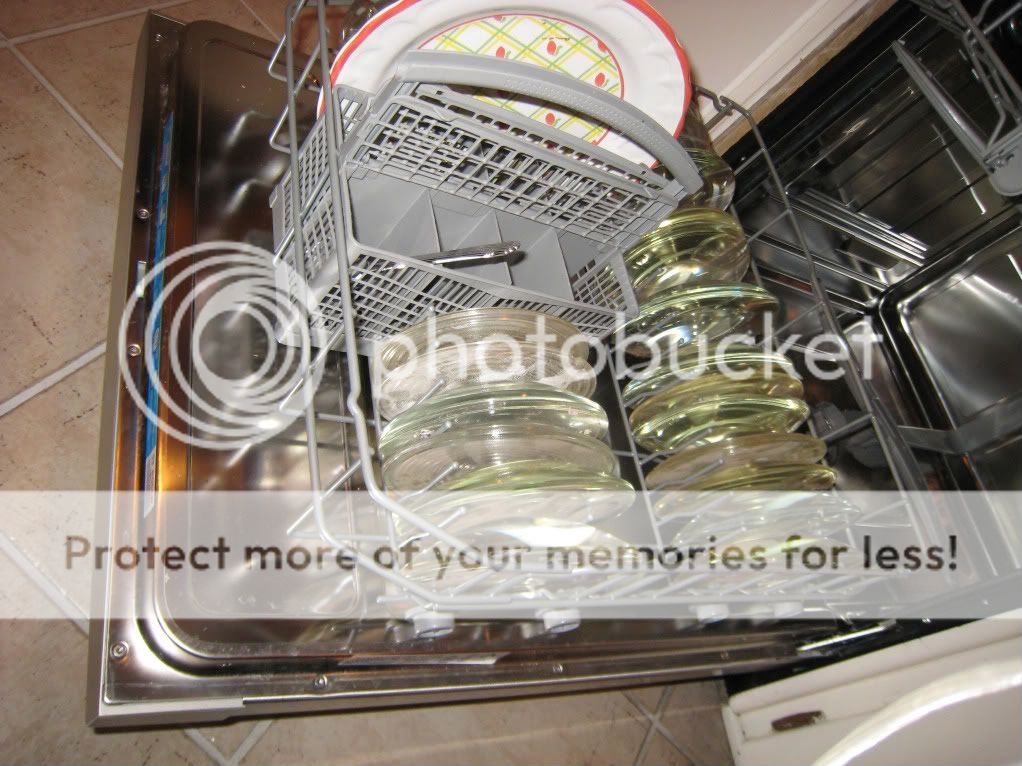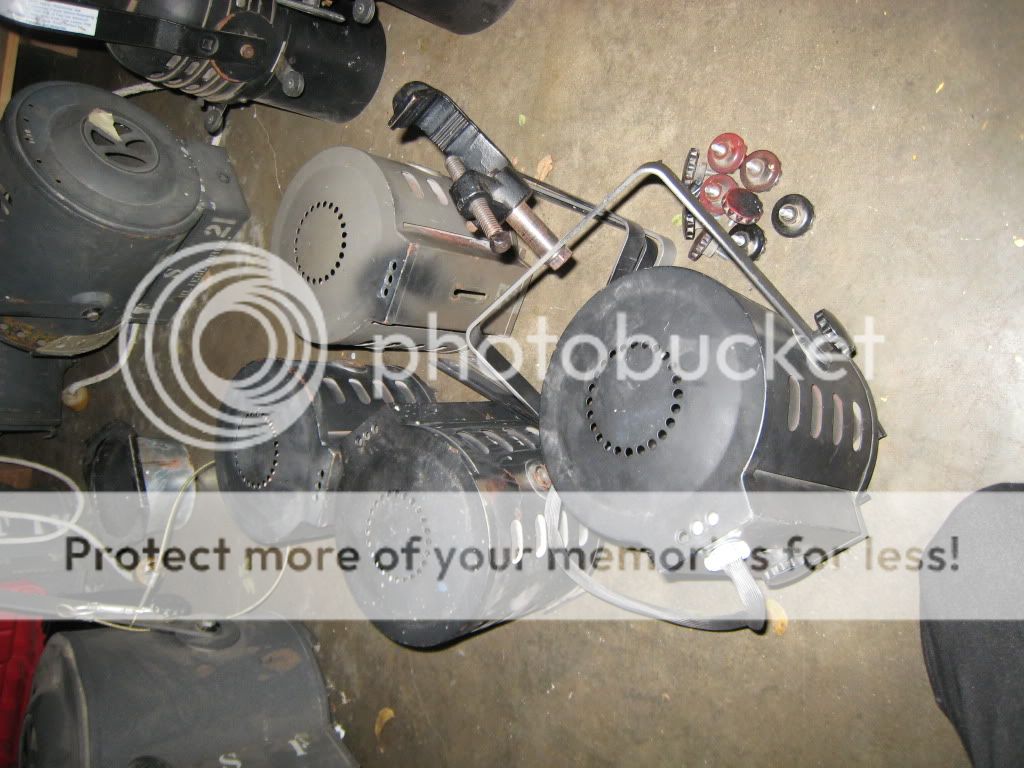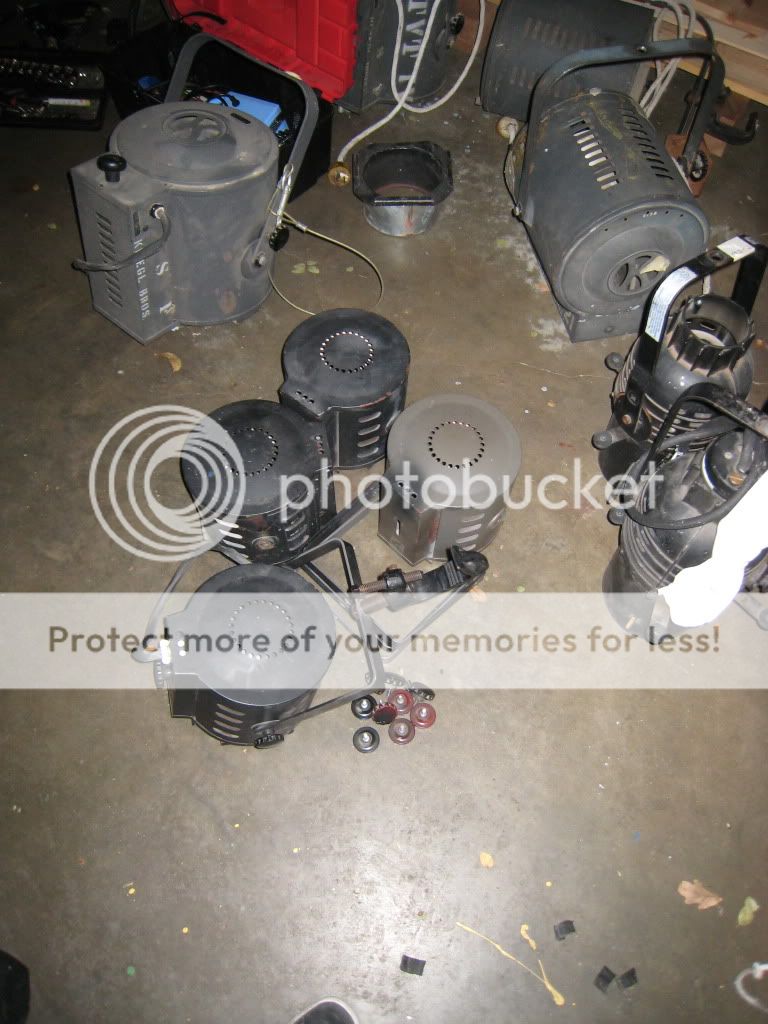While I agree with the “Your responsibility” concept and at best bag and clip the
whip at the
cord grip, I get lots of fixtures with
asbestos whips or cabling off E-Bay or from other sources. A few weeks ago a Mole 2Kw
Fresnel with
whip cut - probably a 12/3 SOOW
whip. But with internal
asbestos wiring. This as opposed to some past worker that brought in like a 8x16
Leko...
asbestos whip fixture. The
whip instantly got cut and bagged on-sighting of it even if I wouldn’t pay his price for the
fixture. That was of service to him, me and those I work around. Sorry... clip and bagged upon sight of the
whip in an immediate sense without asking.
A few years ago there was a post on this website in dealing with
asbestos which Dr. Doom from Stagecraft Digest - an authority on the subject contributed to. His words are the official way of dealing with
asbestos. Bag and cut it, a minimum way at least in taking it to a further extent, bag and cut what you can he didn’t advise but seems sensible.
Not sure what E-Bay’s requirements are for listing gear especially in this way.
Prices seem fair - though if a lot of them I would list them individually still or at least in pairs. Few places want older fixtures, this much less a lot of them - especially if in bad condition for a lot of them. Put a few on the market (below in other options or at least conditions), wait a while, offer up a few more... don't flood the market or you will get next to nothing for them. (This even with me being a potential buyer but playing it fair.) Individual buyers don’t want to get stuck with a bunch of them. I might start at $14.00 per
fixture given the condition if not down to $10.00 given the amount of work and parts that will be necessary. On the other
hand, should you re-wire them properly, you might be able to sell them off in bulk - assuming it not more cost effective to keep them or sell off what you replaced them with and go back to them. All about what you might get what you offer for new.. used.. don't know end result if you already replaced them.
Chances are that most if not all the bases could be saved - there is a lot of surface area on the center contact plate of a P-28s
base, this if you do it properly can be re-surfaced or cheaply replaced if broken. One or two past articles on this forum I have posted about how to do so and what to use in doing so. Also how to re-wire them. Some bases allow the screw terminals to be removed, others don’t... and don’t forget the
asbestos pad under the
lampholder. At least you most likely won’t have to deal with
asbestos lens pads under the
lens - them are nasty to scrape off older say Mole lights. This amongst other parts say the
lampholder insulators themselves that could or is different materials used dependant on the
fixture but normally is only for higher wattage especially studio Fresenels. For a
stage and studio normal, 6"
Fresnel... should be fairly straight forward to re-wire and remove - but do read Dr. Doom’s info for how, should you go about it, make it safe for you in doing so. There is more modern parts you can use to replace
asbestos in all ways between
insulator under the
base or pads under the
lens. If not covered in the past sufficiently I can update such stuff. I love working on old fixtures and have well over a hundred under my belt.
In other words, the 6"
Fresnel, should be safe enough given you follow good practice to re-wire with materials in the past I listed. Perhaps sell a few of them off in paying for the rest of them being re-wired. While there is some slight differences between
Fresnel types or brands... for the most part there is no difference between a modern or old
Fresnel overall. Returning to use your old 6" Fresnels to service instead of buying more would be more cost effective than buying new. Or sell off the new ones if already replaced in paying for bulk fixing of the rest. Nothing wrong with an old
Fresnel if in proper working order - this no matter how old.
As a concept and local to you, Texas Scenic as a known company in your state could gear up to service your fixtures to the extent you want - total re-wiring or
asbestos abatement of the fixtures in sending them back clean to you for a price. Never personally dealed with such a company, but such a concept should be within their ability. This as opposed to other companies such as where I work that could do it but in keeping it local. Local to you is often good if not cheaper. There is companies out there that can deal with the problem and even go beyond that in making it as called "turn key" ready for use as if new and ready to go. Certainly know I could do so easily and if nobody else, contact off
line. Price in doing so would probably be chaper than for a new
fixture dependant on volume in gearing up for it. And a
Fresnel is a
Fresnel for most intensive purposes - saves money unless you ae one of them has to be
ETC brand guys... Or at least if equal in price, preserves the old as opposed to selling short or landfill. A re-wired
fixture should also be worth say 80% of list price of a new
fixture or in at least that range. New Fresnels list for a large price these days. Worth it to I think save your fixtures.
On the 4.1/2" Fresnels... these most likely are not Fresnels but PC fixtures with
Fresnel if not even oval
Fresnel lens fixtures as upgraded say in 1956 or beyond. Them’s your money
fixture from the box spot to the PC
fixture. Lenses are easy enough to get be it from you getting it for the sale in making it worth a
bit more or from the end buyer getting them in getting the
fixture for cheap and no doubt already knowing the price of a 4.1/2"
lens say
thru Altman. Should about balance out.
Send me or post a photo of the 4.1/2"
fixture and I’ll help to tell you what brand and year it was introduced. Search the
fixture for a name plate also in finding that brand. Very important. If these fixtures have at times the “optional”
reflector behind the lamp, and what type of
base of lamp these fixtures had will also be very important. A photo of the
fixture is also important for pricing them out. Given they are probably not worth much anyway... the history of the
fixture still is very important in listing it for resale for a
bit more. Display
Stage Lighting or Giraffe Lighting... I don’t know on a 6"
Fresnel I own.
Rivet holes from missing name plate are in the same place in perhaps coming from the same factory but from different brands as most likely. Sorry I lost out on the Giraffe Lighting
fixture, but it was over-priced given it had no gizzards or
lens, and I was interested in it for was that name plate.
Even for my Kliegl #1N, Nitrogen
Olivette, given today I got in a 1928 catalogue from Major and it looks just like the above Kliegl
fixture from the website’s catalague.. But Kliegl stopped making the
fixture in about 1922-1926... is it a Kliegl or later up to 1928 Major
fixture is stuff in detail very important to research. Really hard to tell from drawing of the
fixture and might have to update the name/info plaque for the
fixture currently out in a vendor tent for a concert.
Actual history of a
fixture is something I’m fascinated with and study a lot about as with collecting them for the new work sponsored museum. TBA and Photos and history to follow. This beyond the actual history of
Altman Stage Lighting. Been told different as to how they started out as a company than the website might list. This as with other companies - the history is out there, just gotta capture that info before it’s gone to the ages. Cut-throat industry before like the 1960's or 70's. TBA an interview with some from
Hub/
Vari-Lite/Dimatronics - that also owns the Major brand for lighting and parts plus parts for many other long gone parts. Fascinating old-timers I know of that I’m working on gaining history from.
Have a watch out on PLSN for articles from Nook the LD. on the
ACL lamp, lamp bar, and
PAR 64, TBA soon.







